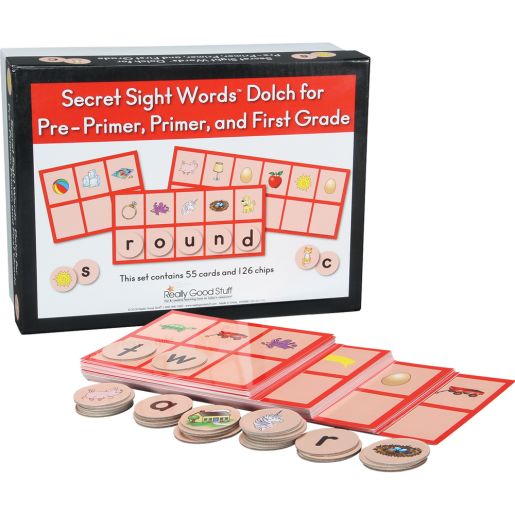Baseball cards are graded based on their condition, rarity, and authenticity, which determines their overall value. Here is a primer on the process.
Welcome to the world of baseball card grading, where the condition of a card can make a world of difference in its importance and value. Whether you are an avid collector or just starting out, understanding how baseball cards are graded is crucial.
Grading involves carefully examining the card’s physical attributes, such as the corners, edges, surface, and centering, to determine its condition. Factors like print quality, authenticity, and rarity are also taken into consideration. In this primer, we will explore the grading process, explain the significance of each grade level, and provide tips for making informed buying and selling decisions. So, let’s dive in and uncover the secrets behind baseball card grading.

Credit: www.reallygoodstuff.com
The Grading Process
In the world of collecting baseball cards, one of the most important aspects is the grading process. This process determines the condition and quality of a card, which in turn affects its value in the market. Understanding how baseball cards are graded can help collectors make better-informed decisions when buying or selling cards. The grading process consists of several steps, each of which plays a crucial role in determining the final grade of a card.
Step 1: Authentication
Before any grading can take place, the first step is to authenticate the baseball card. This involves verifying the card’s authenticity to ensure that it is not a counterfeit or a reproduction. Authentication is typically done by experts using various methods such as examining the card’s printing techniques, comparing it to known authentic examples, and using specialized tools to detect any signs of tampering.
Step 2: Visual Inspection
Once a card has been authenticated, it undergoes a thorough visual inspection. This step involves examining the overall condition of the card, including its corners, edges, surface, and centering. Any signs of wear, damage, or printing defects are carefully evaluated. The card’s color, gloss, and any visible imperfections are also taken into account. The visual inspection plays a vital role in determining the card’s grade, as even minor flaws can impact its overall rating.
Step 3: Determining The Grade
After the visual inspection, the next step is to determine the grade of the baseball card. This is done by comparing the card’s condition to a set of industry-recognized standards. The criteria for grading vary depending on the grading company, but generally include factors such as surface quality, centering, corners, and edges. Each aspect is assigned a numerical value, and the card’s overall grade is calculated based on these individual scores. The grading scale typically ranges from 1 to 10, with 10 being the highest grade.
Step 4: Encapsulation
Once the grade has been determined, the final step is encapsulation. This involves sealing the baseball card in a tamper-evident holder made of plastic. The encapsulation process not only protects the card from damage, but also ensures that its grade remains intact over time. The encapsulated card is assigned a unique identification number, which can be used to verify its authenticity and grade. The encapsulation process adds an extra layer of security and trust to the graded baseball card.

Credit: www.reallygoodstuff.com
Grading Standards And Companies
When it comes to collecting baseball cards, the condition is everything. That’s where grading standards and companies come into play. By assessing the condition of a card, grading companies provide collectors and investors with a standardized and objective way to evaluate the quality of baseball cards.
Psa (professional Sports Authenticator)
PSA, short for Professional Sports Authenticator, is known as the gold standard in the world of baseball card grading. Established in 1991, PSA has been the go-to authority for collectors to determine the condition and authenticity of their baseball cards. With its meticulous grading process and stringent standards, PSA has built a reputation for delivering accurate and consistent results.
PSA uses a 10-point grading scale, with Gem Mint 10 being the highest grade for cards in pristine condition. This respected grading company employs a team of highly trained experts who carefully examine each card, evaluating factors like centering, corners, edges, surface, and print quality. The graded cards are then securely encapsulated in PSA holders, providing protection and preserving the card’s condition for years to come.
Beckett Grading Services
Beckett Grading Services is another prominent player in the world of baseball card grading. With roots dating back to the 1980s, Beckett has established itself as a reputable source for card grading and authentication. While Beckett also uses a 10-point grading scale, they are well-known for their subgrades that provide a more detailed assessment of the card’s condition.
Beckett employs a team of experts who assess the centering, corners, edges, surface, and overall appearance of each card. They also take into account any potential flaws or attributes that may affect the card’s grade. One unique feature offered by Beckett is their grading options, which include Vintage, Modern, and Raw Card Review services, catering to collectors with different preferences and needs.
Sgc (sportscard Guaranty Corporation)
SGC, or Sportscard Guaranty Corporation, is another respected name in the grading industry. With their reputation built on accurate assessments and excellent customer service, SGC has gained the trust of many collectors and investors. SGC uses a numeric grading system ranging from 1 to 100, providing a different approach compared to other major grading companies.
When grading baseball cards, SGC prioritizes attributes such as centering, corners, edges, and surface, ensuring a thorough evaluation of each card’s condition. Their unique grading labels, which include a gold, silver, or white background, add a distinctive touch to the encapsulated cards.
| Company | Grading Scale | Special Features |
|---|---|---|
| PSA (Professional Sports Authenticator) | Gem Mint 10 (highest grade) to Poor 1 (lowest grade) | Secure encapsulation in PSA holders |
| Beckett Grading Services | 10-point scale with subgrades | Vintage, Modern, and Raw Card Review services |
| SGC (Sportscard Guaranty Corporation) | Numeric grading system from 1 to 100 | Distinctive grading labels |
Having an understanding of the grading standards and companies in the baseball card industry can be invaluable for collectors and investors. Whether you choose PSA, Beckett, SGC, or other reputable grading companies, their evaluations and encapsulation processes provide confidence when buying, selling, or showcasing graded baseball cards. So, if you’re looking to dive into the world of baseball card collecting or exploring the value of your existing collection, consider leveraging the expertise of these trusted grading companies.

Credit: www.amazon.com
Frequently Asked Questions Of How Baseball Cards Are Graded: A Primer
What Is The Grading System For Baseball Cards?
The grading system for baseball cards is a standardized method used to assess the condition and value of a card. Professional graders evaluate factors such as centering, corners, edges, and surface to assign a numerical grade from 1 to 10, with 10 being flawless.
Why Is It Important To Have Baseball Cards Graded?
Having baseball cards graded by a reputable grading company provides collectors with a reliable assessment of a card’s condition and authenticity. Grading enhances the value of the card, as collectors and investors trust graded cards more than ungraded ones.
How Can I Get My Baseball Cards Graded?
To get your baseball cards graded, you can submit them to a grading company like PSA, Beckett, or SGC. Follow their submission guidelines, prepare your cards appropriately, and send them in securely. The grading process may take several weeks, but the result is a professionally assessed card.
What Factors Are Considered When Grading Baseball Cards?
When grading baseball cards, professional graders examine various factors, including centering, corners, edges, and surface. They assess the card’s print quality, possible defects, and overall condition. Minor details like print lines, scratches, or creases can impact the final grade assigned to a card.
Conclusion
To sum it up, understanding how baseball cards are graded is key to making informed decisions in the hobby. By familiarizing yourself with the grading scale, knowing the factors that affect a card’s grade, and recognizing the importance of reputable grading companies, you can navigate the world of baseball card collecting with confidence.
Whether you’re a seasoned collector or just starting out, this primer has provided you with the foundation needed to evaluate and appreciate the quality of baseball cards. Happy collecting!

General Manager & Auditorial Head.
Killian Jake is a World Sports Traveler and hobbyist sports lover. By exploring different sorts of playing modules like indoor, outdoor, and many more. As for professionalism and writing, it’s helpful to give you the right suggestions on different games and sports.





